World
Wildfire season has started. Here’s what Europe’s doing wrong
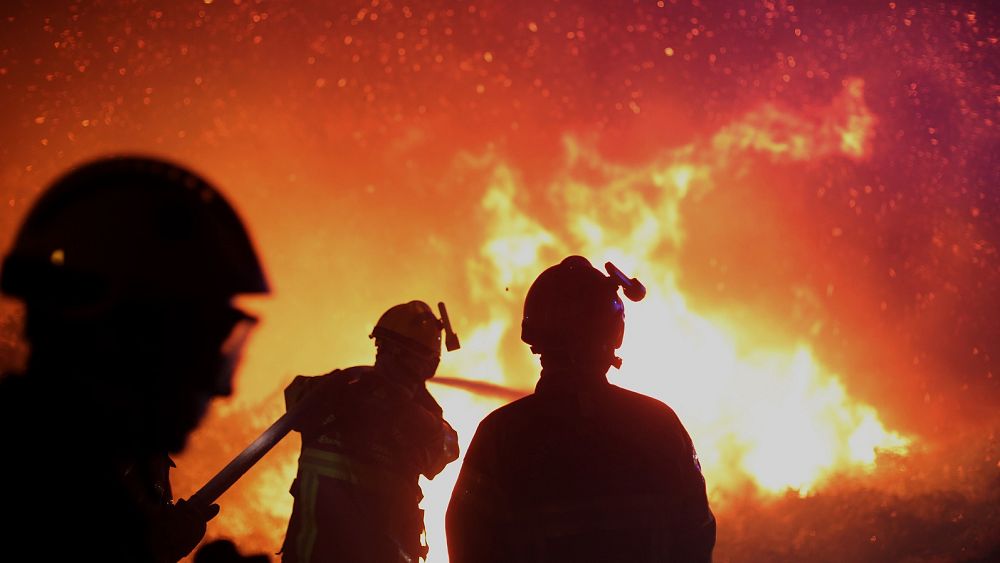
The EU is focusing too much on suppressing wildfires, one expert told Euronews, and not properly addressing the root causes.
By the time summer officially started in Europe this week, sparkling new Canadairs and other firefighting vehicles had been delivered across European Union countries and hundreds of firefighters were already pre-positioned to tackle any wildfire that might ignite.
Europe’s wildfire season is not so much upcoming as it is ongoing with stats already well above the average, suggesting that 2023 could be devastating.
For some, this is proof that the way the EU deals with wildfires is short-sighted with too much emphasis on emergency services and not enough on prevention.
There is also worry that policymakers have been slow to address the air pollution caused by wildfires, which is suspected of being far deadlier than the fires themselves.
Spain and France already deeply impacted
According to the European Forest Fire Information System (EFFIS), more than 119,000 hectares had already been reduced to cinders across the EU by 18 June, well above the average of 80,000 hectares recorded by that time over the 2003-2022 period.
It took just 31 days for the curves depicting this year’s weekly cumulative number of fires and burnt areas to diverge significantly from the ones tracing the last two decades’ averages.
This is despite nearly a dozen countries, including Greece and Italy — two of the traditionally most inflicted nations — seeing below-average figures. The surface burnt in both countries so far this year represents just 10% of the averages they usually see at this time of year.
But Spain and France have not been so lucky. The surface burnt in France has already reached over 21,000 hectares, about 3.5 times the average for the past two decades This is dwarfed by the 66,200 hectares Spain has lost so far this year in 324 fires – both numbers having more than quadrupled.
A spate of countries in central and eastern Europe have also seen numbers jump, albeit from a very low level, but nonetheless confirming a trend observed over the last few years that see wildfires now gradually creeping northward too.
Fire suppression vs prevention
This comes after more than 830,000 hectares were devastated last year — the second worst year since 2006 — with damages estimated at around the €2.5 billion mark.
In response, the EU bolstered its arsenal to combat wildfires by doubling its firefighting fleet this year to count 28 aircraft stationed across 10 countries. And for the second year running, hundreds of firefighters have been pre-positioned, this time in Greece, France and Portugal.
This is of course welcome, but for Prof Dr Johann Georg Goldammer, the director of the Germany-based Global Fire Monitoring Centre (GFMC), it does little to address the root causes.
“At the moment I see that almost all governments are repeating the same and what has been done previously in Southern Europe – focusing on fire suppression, calling for modern vehicles, aeroplanes,” and participation in the EU Civil Protection Mechanism, he told Euronews.
“It seems that this is, for politicians and for the European Commission and governments, kind of an indicator of progress.
“But I don’t see any investment to address the underlying causes of fire, you know, like forestry and land management,” he said.
Climate and demographic changes
Climate change plays a role in the multiplication and intensity of wildfires.
Over a quarter of the EU’s territory is in warning conditions for drought with a further 10% on alert, according to the European Drought Observatory, because of serious rainfall and soil moisture deficits.
And then there is the rising mercury. Europe has been warming twice as much as the global average since the 1980s and was, last year, approximately 2.3°C above the pre-industrial (1850-1900) average.
Since then, the world experienced its warmest May and early June on record with the global-mean temperature actually breaching the 1.5⁰C limit in the first week of this month.
All this means that across large swathes of the continent the land, is much drier than normal, facilitating the spread of wildfires.
But demographic changes also shoulder a lot of the blame. The desertification of rural areas in favour of urban centres means that the land is no longer managed in the same way.
Biomass which was traditionally used for farming or heating or other local human activities, “is now available to wildfire”, Goldammer told Euronews.
Short-term measures like preventive burning to reduce the flammable biomass on certain corridors can help but they’re no magic bullet.
The GFMC has been recommending that European governments make rural space more attractive to younger generations and invest in traditional but also innovative land management to decrease the flammability of the lands.
“Part of it is the fact that this takes an enormous amount of time. It’s so easy to buy half a dozen aeroplanes or ground tankers, you know, investing some billions and presenting them in a nice press conference,” Goldammer said.
“But investing in giving subsidies to local farmers and to shepherds, to modify the flammability of the land, takes a long time. It takes years. And the success is not easy to prove. It’s hard to prove any fire that has been prevented,” he added.
Where there’s fire, there’s smoke
If the old adage goes that where there is smoke there is fire, the reverse is also true and smoke, it turns out, could prove even more dangerous.
“When there’s burning vegetation, a vast range of very toxic and hazardous gases, as well as particulate matter (PM), is emitted and that has direct impacts on local air quality,” Mark Parrington, a senior scientist at the European Centre for Medium-Range Weather Forecasts (ECMWF), told Euronews.
PM2.5 air pollution caused by vegetation fires across Europe is believed to have caused 1,400 premature deaths in 2005 and a further 1,000 in 2008, according to the European Health Observatory. Meanwhile, 865 people died in wildfires between 1945 and 2016 in Greece, Portugal, Spain and the Italian island of Sardinia.
“Health effects related to these massive exposures to air pollution include increased risk of respiratory and cardiometabolic symptoms,” Zorana J. Andersen, the Environment and Health Committee Chair at the European Respiratory Society, told Euronews. These could lead to severe consequences that require the need for medication or hospitalisations.
“In fragile patients, these air pollution episodes can even trigger death. Patients with chronic diseases, especially severe asthma, both children and adults are especially vulnerable, as well as elderly citizens, heart patients, pregnant women and people working outdoors,” she added.
Air pollution is at its highest close to the fire.
But in the case of mega-fires — the likes of which we’ve seen in France, Portugal, Spain and Greece in recent years — when the right, or rather wrong, meteorological conditions are in place, it can travel.
For instance, smoke from the wildfires in Canada over the past few weeks has, at times, got high enough it was picked up by the jet stream and crossed the Atlantic, Parrington said. At other times, weather conditions kept the smoke close to the ground where it was then transported by the wind to large population centres.
Heatwaves further reduce the air quality and exacerbate the pollution, “reminding us that air pollution and climate change solutions go hand in hand”, the ERS expert added.
European policymakers, she said, should urgently pass legislation to lower greenhouse gas emissions driving climate change and “have a historical opportunity to pass the most ambitious air pollution legislation globally” through the ongoing revision of the Ambient Air Quality Directive.
“This would lead to significant reductions of air pollution and related direct major improvements in health, and at the same time ensure mitigation of climate change, with an indirect positive impact on health,” Andersen said.

World
Some Russians make the cut for Paris Olympics but others fail vetting process

World
Iran defies Biden, UN by enriching uranium for nuclear weapons program
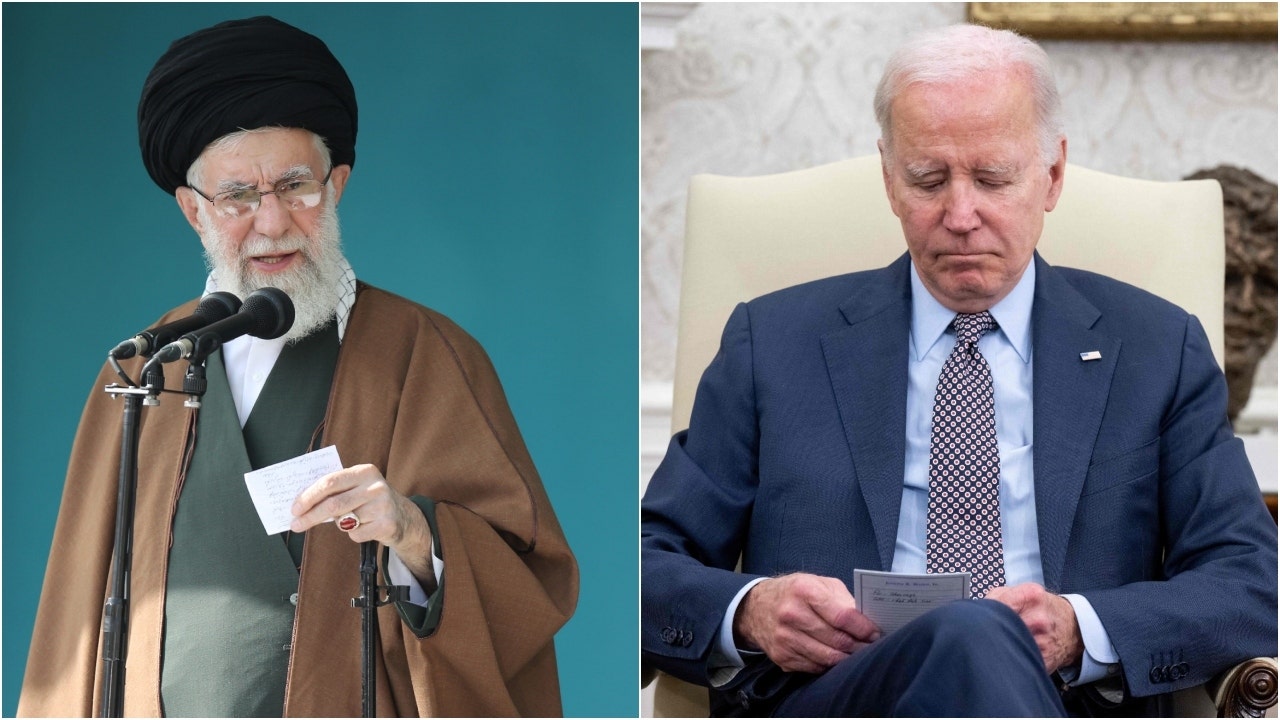
JERUSALEM – The Islamic Republic of Iran retaliated against the Biden administration’s support of a mild U.N. watchdog agency rebuke of Tehran for its work on its covert illicit nuclear weapons program this week.
The U.N.’s International Atomic Energy Agency (IAEA) said its inspectors had verified Monday that Iran has begun feeding uranium into three cascades of advanced IR-4 and IR-6 centrifuges at its Natanz enrichment facility. Cascades are a group of centrifuges that spin uranium gas together to enrich the uranium more quickly.
So far, Iran has been enriching uranium in those cascades up to 2% purity. Iran already enriches uranium up to 60%, a short, technical step away from weapons-grade levels of 90%.
IRAN CAPABLE OF BUILDING NUCLEAR BOMB IN ONE WEEK, REPORT FINDS AS MIDDLE EAST TENSIONS FLARE
President Joe Biden, right, and Iranian Supreme Leader Ali Khamenei, left (Getty Images)
Last week, Israel’s former Defense Minister Avigdor Lieberman, a member of Israel’s parliament (Knesset), told Israel’s Army Radio Tuesday Iran is “planning a Holocaust for us in the next two years.”
In a statement, State Department spokesman Matthew Miller said in response to Tehran’s move that “Iran aims to continue expanding its nuclear program in ways that have no credible peaceful purpose.”
He added, “These planned actions further undermine Iran’s claims to the contrary. If Iran implements these plans, we will respond accordingly.” Miller declined to state what actions the U.S. government will take against the rogue regime in Tehran. The State Department has designated Iran’s regime as the world’s worst international state-sponsor of terrorism.
Behnam Ben Taleblu, a senior fellow at the Washington-based Foundation for Defense Democracies (FDD), sharply disagreed with the U.S. State Department. He told Fox News Digital that “While Washington has promised to ‘respond accordingly,’ it’s been the delayed response, missteps and absorption of Tehran’s previous nuclear moves that got us to this point.”

Iran’s first functioning nuclear power plant in Bushehr, Iran, on April 28, 2024. (Photo by Morteza Nikoubazl/NurPhoto via Getty Images)
Taleblu continued, “Washington must aggressively enforce oil and petrochemical sanctions and militarily threaten that which Tehran holds dear in the region to reset the otherwise sticky impression in the minds of the Islamic Republic’s decision-makers about U.S. and Western resolve.”
Earlier this week, a State Department spokesperson told Fox News Digital, “The United States continues to have grave concerns about Iran’s nuclear program, as we have made clear at the IAEA for many years and again today. Iran’s record speaks for itself, as does its continued failure to demonstrate to the IAEA and the world that its nuclear program is exclusively peaceful.”
The spokesperson added “The Iranian regime continues to amass a growing stockpile of highly enriched uranium for which there is no credible civilian purpose. We look forward to working with fellow Board members [on]a sustainable, effective solution that includes Iran’s full cooperation with the IAEA, especially as we look ahead to October 2025, which is an inflection point for the international community’s quest to make certain that Iran’s program remains exclusively peaceful.”
US IGNORES IRAN’S ACTIVE NUCLEAR WEAPONS ACTIVITIES BY USING ‘DEFECTIVE’ DEFINITION: EXPERT
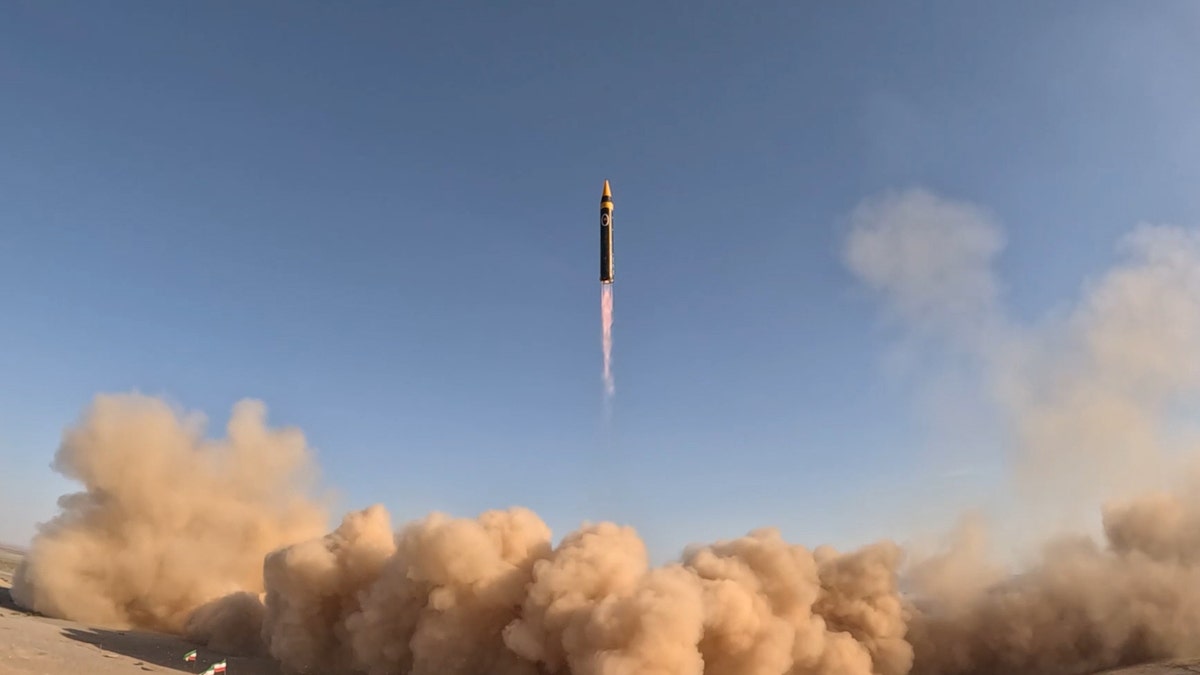
TEHRAN, IRAN – MAY 07: Iran’s medium-range ballistic missile called Hayber (Hurremshahr-4) is seen after the launch during the promotional program organized with the participation of high-ranking military officials in Tehran, Iran on May 7, 2023. The liquid-fueled ballistic missile Hayber, with a range of two thousand kilometers, can carry 1,500 kilograms of warheads. (Photo by Iranian Defense Ministry / Hanodut/Anadolu Agency via Getty Images) (Iranian Defense Ministry / Hanodut/Anadolu Agency via Getty Images)
When pressed by Fox News Digital as to whether the U.S. will impose new sanctions on Iran’s regime, including a crackdown on Tehran’s sale of oil to China, the State Department spokesperson said, “We continue to work with E3 [France, Germany and Great Britain] and the international community on ways to increase pressure on Iran across [a] full range of its destabilizing behavior. We are actively increasing pressure on Iran through a combination of sanctions, deterrence and international isolation to counter Iran’s destabilizing behavior and prevent them from obtaining a nuclear weapon, which President Biden has been clear he will not allow. Any notion that we are backing off is false.”
Taleblu, whose main focus is the Iranian regime’s threat to international security, noted, “Iran is continuing its hourglass strategy, expanding its atomic program while circumscribing international monitoring reports of more advanced centrifuges being installed and operated can’t just be shrugged off by the administration. These machines offer greater means to enrich more uranium in less time.”
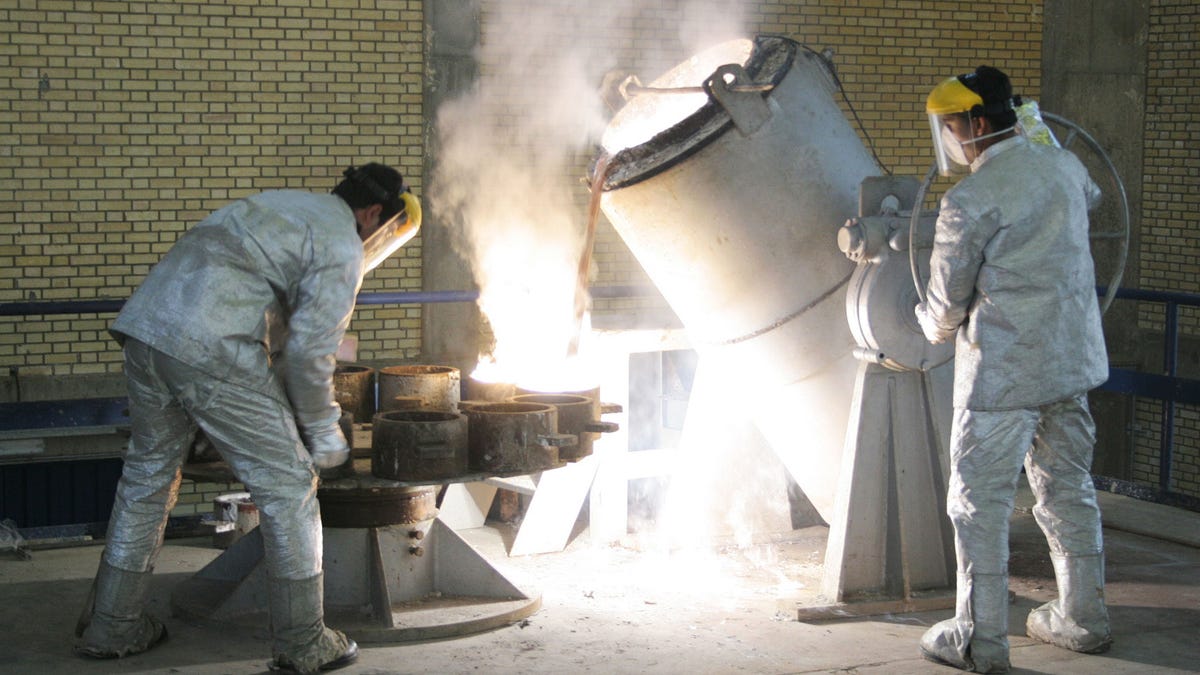
Technicians work inside a uranium conversion facility producing unit on March 30, 2005, just outside the city of Isfahan, about 254 miles (410 kilometers), south of capital Tehran, Iran. The cities of Isfahan and Natanz in central Iran are home to the heart of Iran’s nuclear program. The facility in Isfahan makes hexaflouride gas, which is then enriched by feeding it into centrifuges at a facility in Natanz, Iran. Iran’s President Mohammad Khatami and the head of Iran’s Atomic Energy Organisation Gholamreza Aghazadeh visited the facilities. (Photo by Getty Images) (Getty Images)
Iran also plans to install 18 cascades of IR-2m centrifuges at Natanz and eight cascades of IR-6 centrifuges at its Fordo nuclear site. Each of these classes of centrifuges enriches uranium faster than Iran’s baseline IR-1 centrifuges, which remain the workhorse of the country’s atomic program.
Ali Shamkhani, a former top security official within Iran’s theocracy who still advises Supreme Leader Ayatollah Ali Khamenei, wrote on X that Tehran remains committed to nuclear safeguards, though it “won’t bow to pressure.”
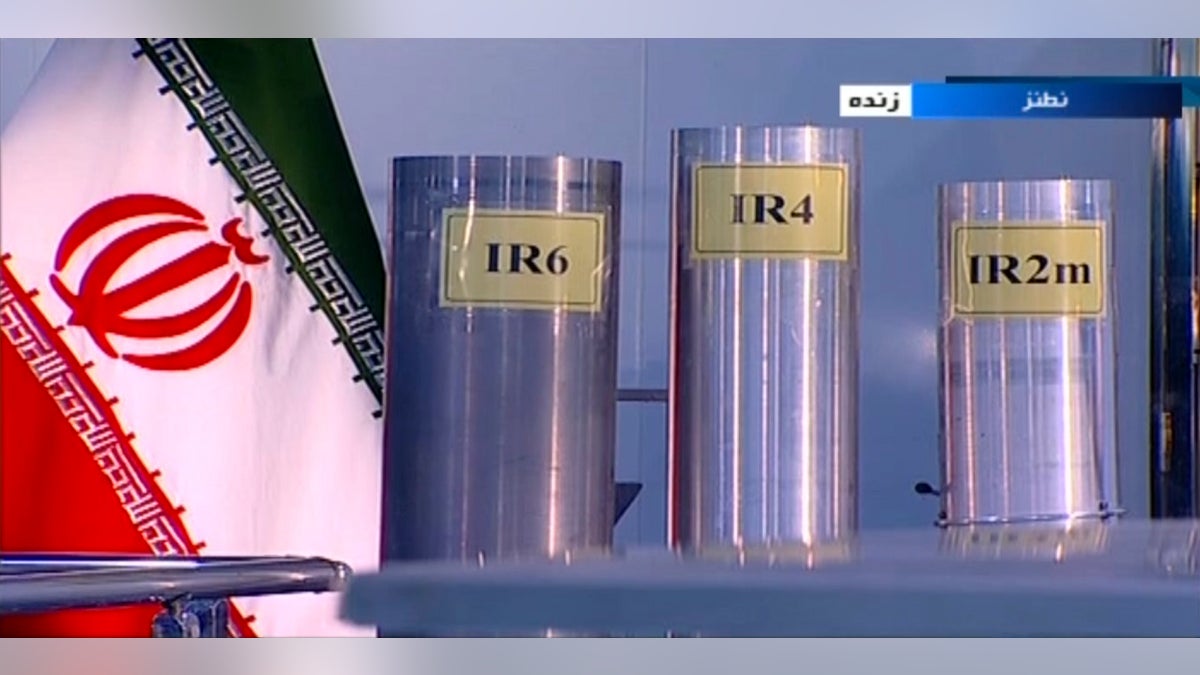
FILE – In this June 6, 2018, frame grab from Islamic Republic Iran Broadcasting, IRIB, state-run TV, three versions of domestically-built centrifuges are shown in a live TV program from Natanz, an Iranian uranium enrichment plant, in Iran. Iranian President Hassan Rouhani is reportedly set to announce ways the Islamic Republic will react to continued U.S. pressure after President Donald Trump pulled America from Tehran’s nuclear deal with world powers. Iranian media say Rouhani is expected to deliver a nationwide address as soon as Wednesday, May 8, 2019, regarding the steps the country will take. (IRIB via AP, File)
“The U.S. and some Western countries would dismantle Iran’s nuclear industry if they could,” Shamkhani wrote.
Since the collapse of Iran’s 2015 nuclear deal with world powers following the U.S.’ unilateral withdrawal from the accord in 2018, the country has pursued nuclear enrichment just below weapons-grade levels. The Trump administration withdrew from the atomic deal in 2018 because, it argued, the accord permitted Tehran to build a nuclear weapon. Fox News Digital revealed last year that Iran’s regime continued to work on the construction of an atomic bomb.
The Associated Press contributed to this report.
World
Russia-Ukraine war: List of key events, day 842

As the war enters its 842nd day, these are the main developments.
Here is the situation on Sunday, June 16, 2024.
Politics and diplomacy
- World leaders are gathering in Switzerland for the second day of a major peace conference to pursue a consensus on condemning Russia’s invasion of Ukraine and underscoring concerns about the war’s human cost.
- Ukrainian President Volodymyr Zelenskyy has voiced hope of garnering international agreement around a proposal to end the war that he could present to Moscow.
- The circle of countries participating in the process of working towards a peace plan for Ukraine should be widened, French President Emmanuel Macron said during the opening of the peace summit.
- Italian Prime Minister Giorgia Meloni described as “propaganda” Russian President Vladimir Putin’s demand that Ukraine effectively surrender before any peace talks.
- United States Vice President Kamala Harris announced another $1.5bn in assistance to Ukraine, as she pledged the US’s full support in backing Kyiv’s efforts to achieve “a just and lasting peace” in the face of the war with Russia.
- A draft of the final summit declaration reportedly refers to Russia’s invasion as a “war” – a label Moscow rejects – and calls for Ukraine’s control over the Zaporizhzhia nuclear plant and its Azov Sea ports to be restored, the Reuters news agency reported.
- White House National Security Advisor Jake Sullivan told reporters that Qatar had helped to mediate the return from Russia of 30 or more Ukrainian children to their families. Kyiv claims that as many as 20,000 children have been taken to Russia or Russian-occupied territory without the consent of family or guardians since the war began.
- More than 90 countries are taking part in the summit, but China said it would boycott the event after Russia was frozen out of the process.
Fighting
-
The peace summit comes at a perilous moment for Ukraine on the battlefield, with Russian forces advancing against outmanned and outgunned Ukrainian units.
-
Near Ukraine’s embattled eastern front, hopes for a diplomatic breakthrough are nearly nil. “I’d like to hope that it will bring some changes in the future. But, as experience shows, nothing comes of it,” Maksym, a tank commander in the Donetsk region, told the AFP news agency.
-
Outside the peace summit venue in Switzerland, the wife of a Ukrainian soldier captured by Russia said she hoped the leaders could agree to “some exchange process for the prisoners of war”. “I want to see my husband,” Hanna, who fled her home in the southern Ukrainian city of Mariupol and now lives in Sweden, told AFP.
-
Meanwhile, Russian army defectors live in fear of reprisal from Moscow after abandoning their posts in the ongoing war with Ukraine. Many also feel abandoned by the West, as they do not have the necessary passports and only have documents allowing them to reach neighbouring Kazakhstan or Armenia.
-

 News1 week ago
News1 week agoIsrael used a U.S.-made bomb in a deadly U.N. school strike in Gaza
-

 World1 week ago
World1 week agoFrance to provide Ukraine with its Mirage combat aircraft
-

 World1 week ago
World1 week agoWorld leaders, veterans mark D-Day’s 80th anniversary in France
-

 World1 week ago
World1 week agoRussia-Ukraine war: List of key events, day 833
-

 Movie Reviews1 week ago
Movie Reviews1 week agoInsane Like Me? – Review | Vampire Horror Movie | Heaven of Horror
-

 News1 week ago
News1 week agoNonprofit CFO Accused of 'Simply Astonishing' Fraud
-

 Politics1 week ago
Politics1 week agoGeorge Clooney called White House to complain about Biden’s criticism of ICC and defend wife’s work: report
-

 Politics1 week ago
Politics1 week agoNewson, Dem leaders try to negotiate Prop 47 reform off California ballots, as GOP wants to let voters decide

















